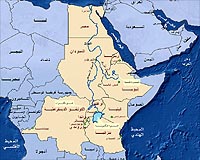| . |  |
. |
Seattle WA (SPX) Dec 14, 2010 Fog is a common feature along the West Coast during the summer, but a University of Washington scientist has found that summertime coastal fog has declined since 1950 while coastal temperatures have increased slightly. Fog formation appears to be controlled by a high-pressure system normally present off the West Coast throughout the summer, said James Johnstone, a postdoctoral researcher with the Joint Institute for the Study of the Atmosphere and Ocean at the UW. "The behavior of that high-pressure cell is responsible for a lot of the weather phenomena we see on the coast," he said. It can alter water temperature, ocean circulation, surface winds and other factors linked to coastal fog formation. The fog decline could have negative effects on coastal forests that depend on cool and humid summers, but Johnstone, who presents his findings Monday (Dec. 13) at the American Geophysical Union annual meeting in San Francisco, hasn't seen evidence of that yet. In fact, climate models indicate that coastal fog should be increasing because of global warming, but he believes that is not happening because of strong influence exerted by regional circulation patterns related to the Pacific Decadal Oscillation. That climate phenomenon, centered in the North Pacific, has wide-ranging effects that last for years or even decades rather than for just a year or two. "You would eventually expect to see significant effects on the coastal forests if the fog continues to decline," he said. Johnstone examined records from airports up and down the West Coast that have taken hourly readings on cloud height for the last 60 years. He looked closely at two stations in particular, Monterey on the central California coast and Arcata on the northern California coast, and found that their decline in fog and increase in temperature matched very closely despite being separated by about 300 miles. Both also reflected a great deal of variability. "During a foggy summer you tend to have cool conditions along the coast and unusually warm temperatures in the interior," Johnstone said, adding that during less foggy summers coastal areas tend to be warmer than usual and the interior is cooler. Historically there have been stark temperature differences at times between the coast and areas just a short ways inland. But the differences have been shrinking in recent years, mostly because of rising coastal temperatures, he said. Cooler temperatures typically are located near sea level, and the warmer inland temperatures begin to show up at about 1,300 feet in elevation. Johnstone found that the contrast between inland and coastal temperatures was much greater from 1900 to 1930 than during the last 60 years, indicating that summers on the coast were much foggier in the early 20th century. But he notes that while coastal fog has generally declined, the data in general have shown consistent variability. For example, the Pacific Northwest, and Seattle specifically, had record fog frequency in the summer of 2010, and many places along the West Coast recorded their foggiest summer since 1991. A next step in his work will be to understand the discrepancy between climate models and actual fog observations so that the factors involved in summer fog formation can be better understood.
Share This Article With Planet Earth
Related Links University of Washington Water News - Science, Technology and Politics
 Ethiopia challenges Egypt over Nile water
Ethiopia challenges Egypt over Nile waterCairo (UPI) Dec 8, 2010 The simmering dispute over the Nile River between Egypt and downstream African states is heating up with Addis Ababa alleging Cairo supports insurgents fighting the government of Ethiopian Prime Minister Meles Zenawi. The expected breakup of Sudan, Egypt's southern neighbor and its ally in the Nile dispute, next January following a referendum on southern independence will further compli ... read more |
|
| The content herein, unless otherwise known to be public domain, are Copyright 1995-2010 - SpaceDaily. AFP and UPI Wire Stories are copyright Agence France-Presse and United Press International. ESA Portal Reports are copyright European Space Agency. All NASA sourced material is public domain. Additional copyrights may apply in whole or part to other bona fide parties. Advertising does not imply endorsement,agreement or approval of any opinions, statements or information provided by SpaceDaily on any Web page published or hosted by SpaceDaily. Privacy Statement |